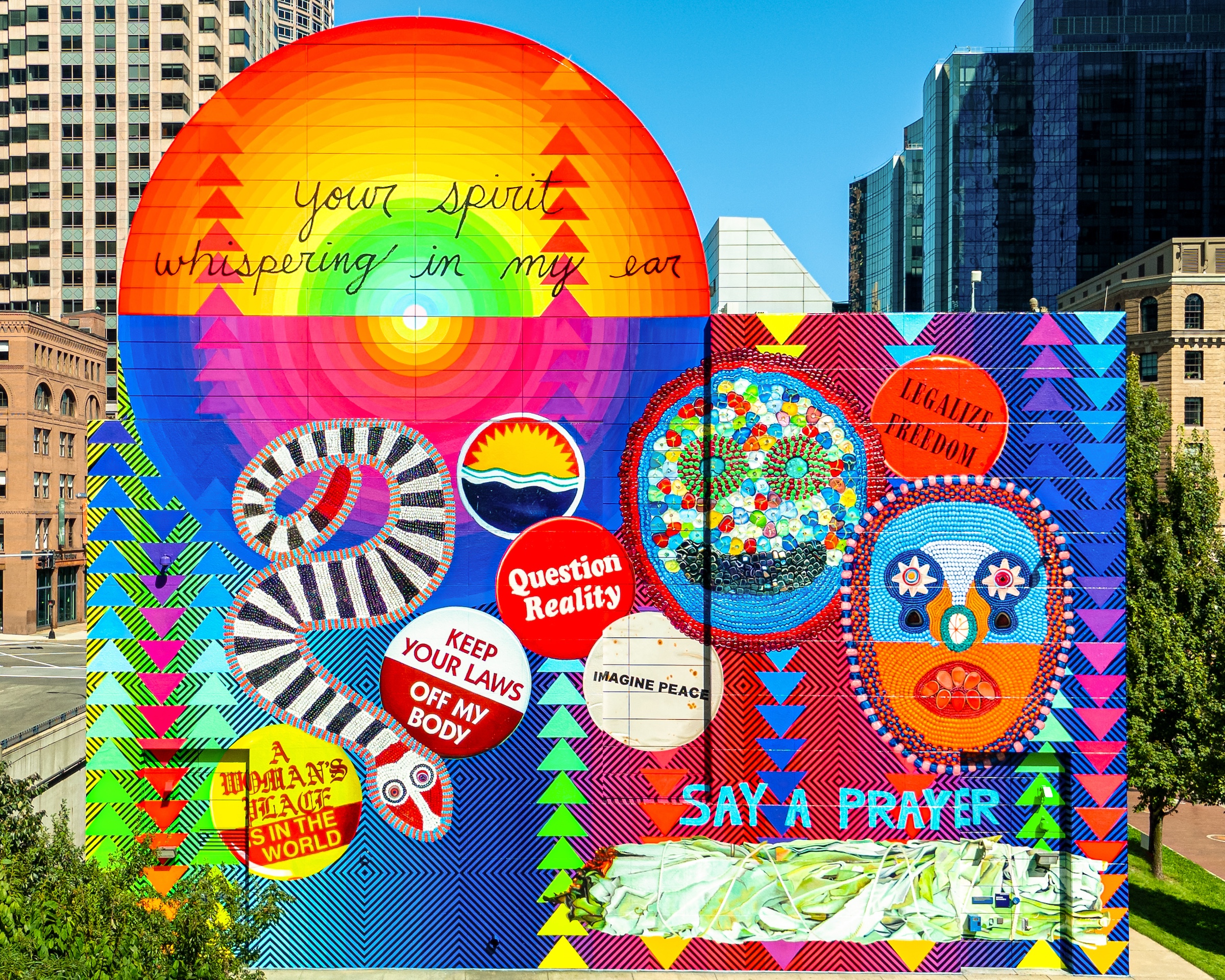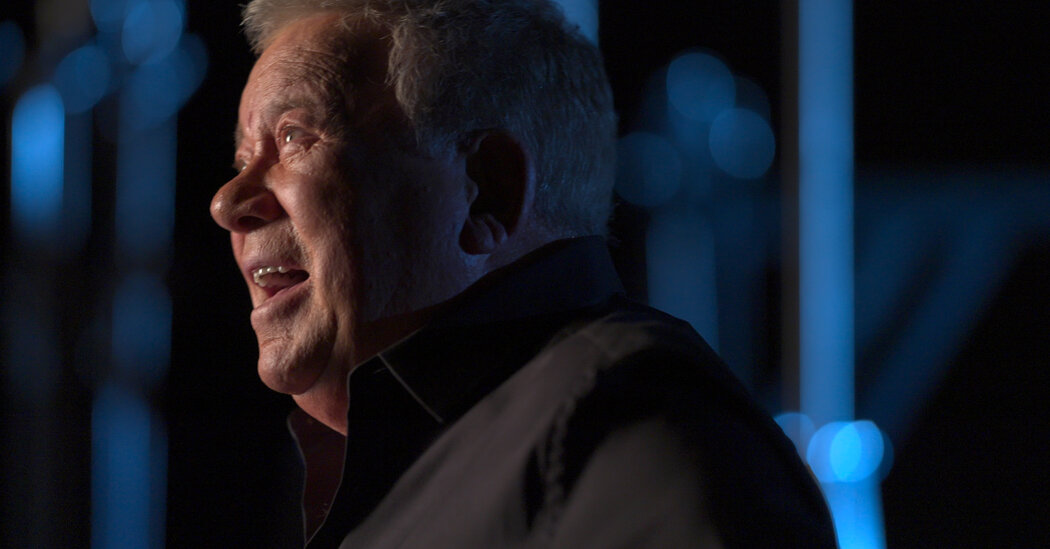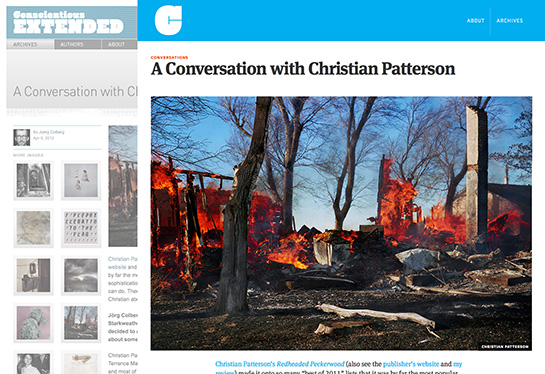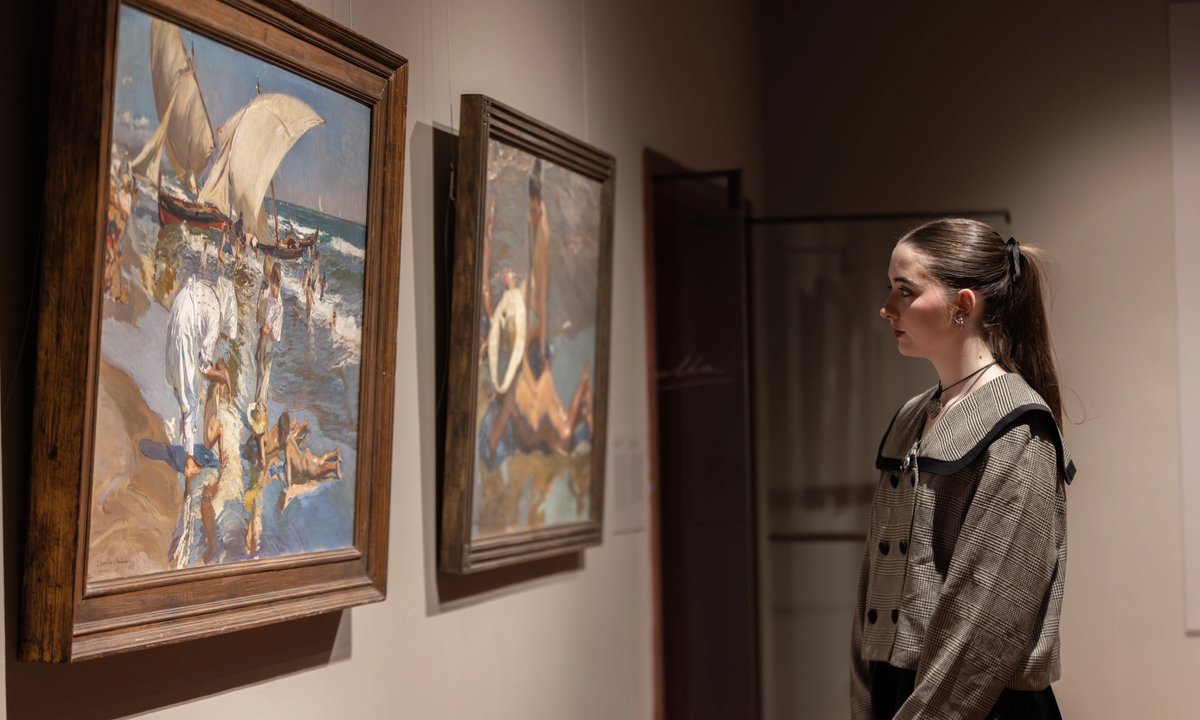‣ Despite not having gallery representation, Renée Cox has been pushing artistic boundaries for decades. Photographer Gioncarlo Valentine interviews her for the New Yorker and looks back at the breadth of her underrecognized oeuvre:
The I.S.P. experience charged Cox’s practice with newfound clarity and discipline. She embarked on more conceptually complicated work, like her “Yo Mama” photographs, a series of self-portraits that meditate on motherhood and the body in ways both subtle and confrontational, and “Queen Nanny of the Maroons,” a series in which Cox casts herself as the legendary Queen Nanny, a Jamaican woman who led a revolt of the enslaved and who stands as a symbol of unity and revolution. One of my personal favorites is “Raje,” a series in which she appears as a superhero attempting to rescue Black people from racial stereotypes. In “The Liberation of Aunt Jemima and Uncle Ben” (1998), one of Cox’s best-known works, she and two other superhero figures lock arms in front of the notoriously exploited images of Aunt Jemima and Uncle Ben, attempting to protect their visages from further misuse. Despite their campiness, the “Raje” images convey an important criticism of the history behind these two figures, while positing the need to see Black superheroes. Today, in an era when we have superheroes like Black Panther, and the companies formerly known as Uncle Ben’s and Aunt Jemima have officially changed their names, the photographs also establish that Cox has always been prescient.
‣ Critic Carolina Miranda reviews exhibitions in Denver that dig deeper into the myths, tensions, and long history of the American cowboy for the New York Review of Books:
This painting shared space with an installation by Nathan Young, an enrolled member of the Delaware Tribe of Indians, who presented artifacts from his community in Oklahoma that document traditions of Indigenous horsemanship—in this case, that of Pawnee riders. (The artist has Pawnee and Kiowa ancestors.) Activation/Transformation II featured a saddle and a vintage poster for an Indian rodeo that included a graphic of a Plains feather headdress alongside images of men on bucking broncos. Young considers the historical and spiritual significance of these artifacts in his arrangements, and it’s too bad the museum didn’t afford him more space and some dramatic lighting to create an installation that felt more immersive. (It consisted mostly of vitrines against a wall.) But some of the objects nonetheless emitted a certain charge. I was taken by a pair of blue-and-black cowboy boots bearing the seal of the Pawnee Nation that shows a wolf in profile, along with a tomahawk and a peace pipe. The boots’ scalloped edges were trimmed with a thin band of red leather, the pull straps studded with silver conchas. It was stylish cowboy flamboyance rooted in Indigenous aesthetics.
‣ Another day, another fascist shenanigan from India’s Narendra Modi. Meetu Jain reports for the Wire on a monument adoption program spearheaded by the prime minister that encourages companies to buy historic sites … and build restaurants inside them:
Besides the restaurant, the ‘vision document’ of the corporate group entrusted with ‘adopting’ the 16th-century complex – a UNESCO World Heritage Site – also proposes a café atop the western entry gate. The restaurant and the café will be accessed by elevators installed abutting the historical structures. And there’s more: a gaudy sound and light show on the tomb’s western façade; and special events and private dining in the gardens.
These changes to Humayun’s Tomb have been entrusted to the Dalmia Bharat group, which also controversially “adopted” the Red Fort in 2018. Similar proposals have been made for Safdarjung’s Tomb, Purana Qila and the Mehrauli Archaeological Park.
When Dalmia Bharat, a cement company with little experience in conservation, came forward to “adopt” the Red Fort in 2018, its CEO Mahendra Singhi said, “It will help us integrate the Dalmia brand with India.” The founder of the group, the late Vishnu Hari Dalmia, was a former president of the Vishwa Hindu Parishad and an accused in the Babri Masjid demolition case.
‣ Speaking of fascist shenanigans, journalist Noah Shachtman has the scoop on an alliance between disgraced New York Mayor Eric Adams and the tabloid New York Post. For Intelligencer, he writes:
The union of the paper and Adams was bound to have an expiration date, especially with crime immediately rising under the new “law and order” mayor and buses of migrants starting to arrive from Texas. His days were too full of questionable decisions. His nights were too full, period. But the paper’s go-go-go approach to the news also had the effect of shielding Adams from some of its most potent reporters. The bosses generally prioritized quick-turn stories over investigative pieces, which required more resources. Posties told me they had to fight to get the time and bandwidth to look into all the Adams cronies who suddenly had major government positions — and all sorts of potential conflicts of interest. In July 2022, the Post had the making of an eye-popping exclusive: Adams was hiring his close friend Tim Pearson for a top government job — while allowing him to keep his position running security at a Queens casino. But the story didn’t publish for weeks. It was only later, when the New York Times broke the news in August, that the Post finally ran its own piece. Pearson resigned from the casino position shortly thereafter but maintained a broad portfolio in City Hall, where he is known as one of the most powerful people besides the mayor.
‣ The loneliness epidemic is nothing new, and few of us are immune. But new research adds a wrinkle to the equation, raising the question of whether we even have enough time to not be lonely. Laura Pitcher writes in Dazed:
There’s always been a relatively expected decline in face-to-face time with friends going from high school or college to the workforce. Still, our current relationship with time and socialising goes beyond that. According to Natalie Pennington, an assistant professor of communication at Colorado State University, even young Americans currently wish they had more time for their friendships. “On one hand, adults absolutely gain additional obligations that make it harder to spend time with people,” she says. “But on the other hand, things happening in society are contributing as well.” This includes a shift in how we communicate with each other. Pennington’s prior research shows that face-to-face communication and voice calls make people feel connected, but texting and video calls are less beneficial (and social media and email do not promote connection or decrease loneliness). It also suggests that many young people feel like they’re lacking valuable social skills after the pandemic.
‣ And during the free time we do have, binge-watching TV can feel like a comforting, mind-numbing pastime. For A Rabbit’s Foot, Haaniyah Angus explores why we specifically love to watch shows about work, even after a long day of work:
In the 1990s, satirical depictions of office culture in films such as Office Space, American Psycho, The Matrix and Fight Club sought to examine the lethargic and mundanity of typical 9-5 jobs. But as culture writer Engwari explains, the mundane is now appealing. “When we used to think of the office from media depictions, the first thing that came to mind were grey cubicles, boring co-workers and managers droning on. Now, we have people aspiring to that as a status symbol that’s so much more attractive than taking the risk of being creative or freelancing.” It may seem ironic to older generations that Gen Z and Millennials find comfort and intrigue in shows like Industry, Mad Men, Emily in Paris, Suits or Grey’s Anatomy. The youth—aka people in their mid-20s and 30s—apparently yearn for stability.
Think about the recent obsession with journalists from 1990s and 2000s Romantic Comedies, such as Jennifer Garner in 13 Going on 30, Kate Hudson in How to Lose a Guy in 10 Days or even Carrie Bradshaw in Sex and The City. Today, being a writer means little-to-no stability and money because of the lack of funding within journalism. When you watch entertainment like Sex and the City, you get a taste of the good old days when you could get paid $4 a word at Vogue. But unlike journalism, there is always money to be made in finance.
‣ Scholar Ruha Benjamin was awarded a MacArthur “Genius” Grant this week, and she had some choice words for Princeton University after they excluded her responses in an announcement because she discussed Gaza:
‣ Friendship’s on everyone’s minds this week — YouTuber Mina Le investigates in her latest video essay:
‣ Moo Deng would be proud:
‣ Someone’s ready for Halloween …
Required Reading is published every Thursday afternoon, and it is comprised of a short list of art-related links to long-form articles, videos, blog posts, or photo essays worth a second look.



